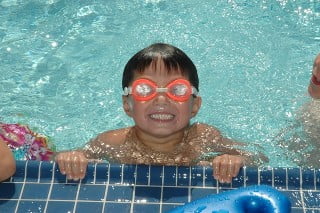Inquire Now T
Get FREE Registrations

4.5 /5 Star Rated Preschool in Yelp

Being able to form a choice may be a vital life skill that children carry into adulthood. We are presented with many choices on the day-to-day, from tiny ones – like manoeuvering through traffic – to big ones – like career moves. While performing some research, Infant Care San Diego brings you a variety of games to choose from.
Decision making is not any different – teach your young child this skill and she or he will have it developed long before she enters the workplace.
Musical chairs are one among the simplest games for teaching fast, on-the-spot decisions.
The game is simple:
This is a game of thinking fast because if you don’t choose a chair and move thereto quickly you’ll lose out. With practice, children find out how to settle on a chair.
Tic Tac Toe, also called naughts and crosses, is one among the only yet best games for practicing deciding. Not only does one get to choose squares that will assist you to get a row of three, but you furthermore may get to choose squares to prevent your partner from potentially getting three during a row. It takes tons of concentration and practice to urge good at this game and it is often tough initially for young children but they’re going to soon catch on and begin outsmarting you.
Here are the principles of the game:
This game is often played on a chalkboard, whiteboard, paper, or a Tic Tac Toe board.
Show your child an image of an ant and an image of an elephant. Play the sport by asking Would you preferably be an ant or an elephant? Your child has got to pick a solution and explain why. This is an excellent decision making activity for teenagers which will also build their thinking and reasoning skills. You can use any quiet animal, person, or quality as an example. Keep a box with picture cards in and play it regularly. you’ll also ask your child to form up to her own.
Here are some more examples:
Would you preferably be tall or smart? Would you preferably be a doctor or a builder? Would you preferably be a fox or a tortoise?
One of the foremost traditional and played games of all time, hide-and-seek is often an excellent decision making game. Add a replacement rule that you simply cannot hide within the same place twice and your children will need to continuously be thinking of the latest places to cover. the incorrect choice will end in them being found too easily!
This game is often part of your evening bedtime story routine. Choose a story your child hasn’t heard before and skim the primary few pages.
Pick-up sticks are an old favorite. you’ll use a group of wooden devour sticks, skewer sticks, straws, or maybe twigs from the garden. It requires making a really careful decision about which stick to move whenever. Making the incorrect decision will end in losing a turn.
This is how you play the game:
The winner is that the person with the foremost sticks at the top.
So here Infant Care San Diego has discussed the 6 Decision Making Games for your Kids. You can try these games to develop the decision making skills of your children.